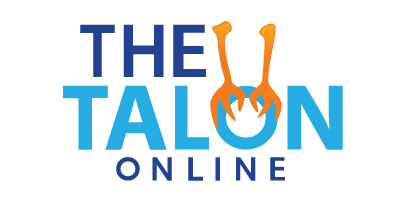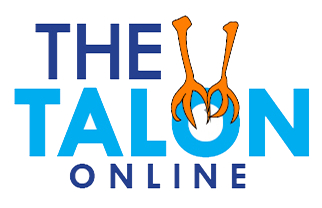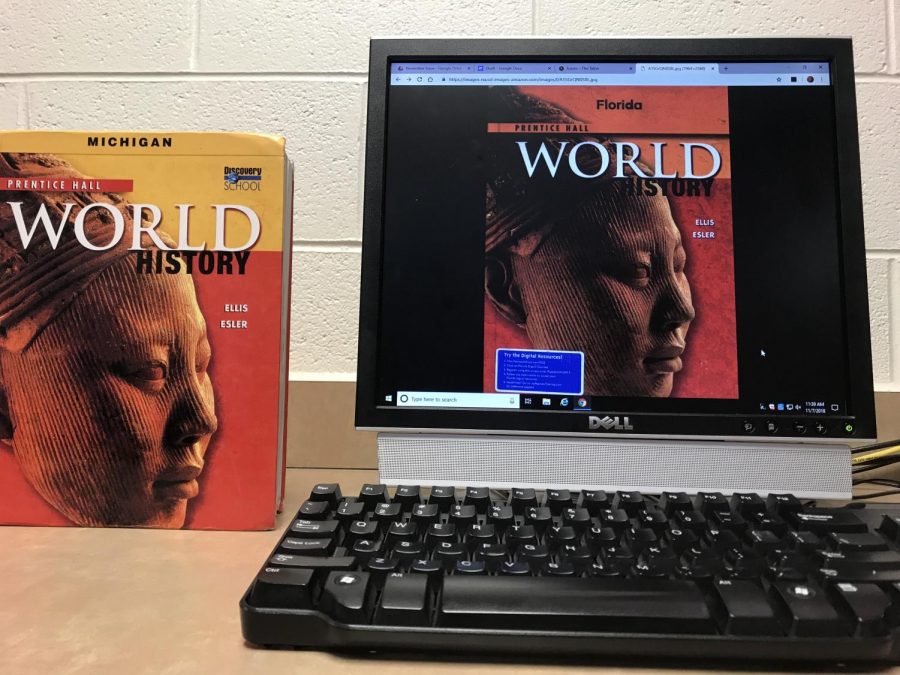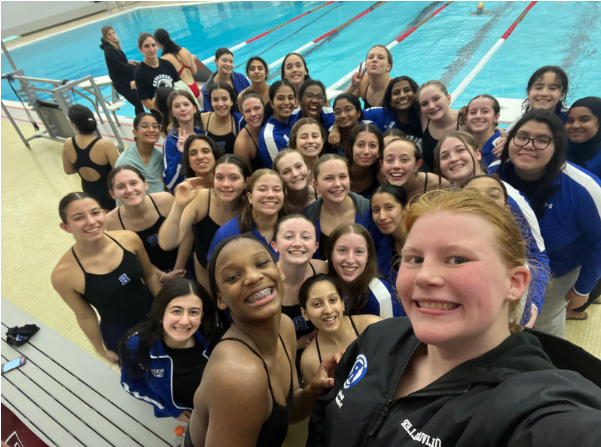Technology changes: Do they help or hurt learning?
December 5, 2018
Since the time chalkboards were used in elementary school classrooms, to now where Smart Boards are used in everyday lessons, schools have changed a lot. When Mrs. Karen Carl, Rochester’s technology facilitator, was a student, chalkboards were used to teach lessons, and students were on their own to study. Now, new technology has been put in classrooms which has changed the way people learn.
“If you go way back, there was a time when there was no technology in the classroom,” Mrs. Carl said. “The teachers even had to hand crank a duplicator to make copies.”
In a typical high school classroom, many day-to-day routines are done through technology. Grades and attendance are entered through programs installed in every computer. Lessons are taught from Smart Boards, which are in every classroom.
“I am very happy that we have our IFPs,” language arts teacher Mrs. Ashley Painter said. “[The IFP] allows us to move back and forth between me writing things on the board, putting up something interactive for my students to do and having students send in responses, [which] is really nice.”
Devices like the IFP and Smart Board make teaching easier and faster.
“Now, teachers have access to a lot of different technology,” Mrs. Carl said, “and they need to figure out how it helps them teach their curriculum.”
The internet has not only made teaching easier for teachers, but any work they do outside of the classroom as well. They can do administrative work and talk to other teachers in the district just by visiting a website.
“Being able to complete things online has made it easier to do many things, like organize meetings, collect data, complete interview questions, etc.,” Mrs. Carl said.
Schools also have laptop carts for students to use during class. These can be taken to classrooms, or basically just used anywhere. There are also designated collab spaces at Rochester for classes to come and use the carts. Couches, chairs, and tables are placed in the collab area for students to sit on and use. The students can do their work and be comfortable at the same time.
“We also use laptops,” said sophomore Amitav Oehlberg. “We’ll go to the Media Center and use computers for docs to write full essays out, and it’s expanded our capabilities in class.”
The Media Center also has many computers for students to use during the morning, lunch or any time of the day. These computers have given teachers access to a variety of ways to teach and do work in their classroom.
In addition to widespread access to laptops and other computers, many high school students own some kind of cellphone. Smart phones provide an easily accessible way to use technology that students may enjoy using more than a laptop or computer.
“We’ve integrated phones a lot more,” Oehlberg said. “Teachers use them for things like Kahoot and Quizlet.”
Kahoot is a game app that lets teachers write questions and answers, then turns it into a game for students to play. Quizlet is a studying app, where students can create study sets of vocab, questions, etc. It gives different ways to learn them through games, tests, and flashcards. These, and many other websites, present alternate ways to study with technology that allow students to review and have fun at the same time.
“It makes things a lot more fun, a lot more interesting, and gets people more involved,” freshman Adriana Grillo said.
Technology is another way for teachers to communicate with students outside of class. Apps like Remind 101 let teachers send out texts to students, and students can also respond back. This is helpful when students are doing homework late at night and they have a question. They can just text their teachers, instead of having to wait until the next day. Google classroom is another way for students to turn in papers for a specific assignment in a class created by the teacher. This way they don’t have to print it out and give it to the teacher to keep track of it.
“It’s just given me more ways to be connect with students outside of my classroom,” Mrs. Painter said. “Which is great. I use it a lot for assessments and for students to provide feedback, and for me to provide feedback to them.”
All this technology has changed the classroom environment, but sometimes it can go wrong.
“I think the common phrase is ‘technology is great until it fails,’” Mrs. Painter said. “Wi-Fi goes down, printers stop printing, laptops break, phones don’t charge. This prevents people from being able to work on a project. I think it’s great, but its really difficult when you do run into issues, because there’s really no way to replace it.”
The internet has worked its way into the world, and people are starting to depend on it entirely. It’s been used so much in people’s lives, it’s a habit to be on the internet during any free time. That habit is seen in a classroom as well.
“We shouldn’t make it become 100 percent of what we do, we just got to integrate it properly,” Oehlberg said. “Since communication is mainly done through social media and technology, phones are basically stuck to everyone’s hands.”
“The world wide web doesn’t have open/closed times, so some people feel like they need to be ‘on’ 24/7,” Mrs.Carl said. “People need downtime when they are not connected to a device.”
A problem that has arisen with having students write papers and complete assignments at home is plagiarism. With almost every resource at a person’s hand on the internet, it’s so easy to google an article, copy, and paste it, then turn it in as your own. Teachers use other online websites to check for these as well.
“There’s programs for teachers, so when you turn it in, it’s turnitin.com, I think, it’ll tell you the amount of plagiarism on it,” Oehlberg said. “And the fact that we need it is a problem.”
With more textbooks being put online, students have to read online to do a lot of their work. This means staring at a screen and trying to comprehend at the same time.
“There’s been a lot of research in the past couple years,” Mrs. Painter said. “Stanford University did a really comprehensive study about the effects of reading online versus on paper, and students will read much more thoughtfully when it’s on paper.”
Most classes still use worksheets as a form of learning and homework. However, things happen, and sometimes it happens to the homework.
“Paper can be ruined. Dogs eat homework, coffee gets spilled,” Mrs. Carl said.
Oehlberg agrees that online work has advantages over handwritten work.
“On paper can take a lot more time, writing out each character,” Oehlberg said. “You also have the issue of if a teacher can’t read something correctly, or your handwriting’s not good enough, penmanship can become a problem, or just how people write in general.”
While technology has been advancing, and more people are using it, paper does have it’s benefits. It’s always good to have a hard copy of something in case the internet is not working or can’t be accessed.
“I prefer to do some things online, but not everything, because like math, it’s hard to do online, but easier on paper because you can show your work and figure it out better,” said freshman Marissa Gallagher.
Although some students find certain subjects easier to study on paper, Mrs. Carl points out that technology can make materials easier to access.
“When things are done online, the user can do them at their convenience,” said Mrs. Carl. “A student can look at an assignment after practice or during lunch.”
With all of the benefits that technology can bring, Mrs. Painter is thankful to be in a community that supports changes in technology.
“I’m just thankful we have a community that has passed the bond and provided teachers with technology as a resource to continue to allow kids to work with technology,” Mrs. Painter said. “You know, it’s the future for a lot of our kids, and they gave us the technology to really bring some things to life with them in our classroom and use it for a resource. I’m just really glad that our community was so supportive of that initiative.”







